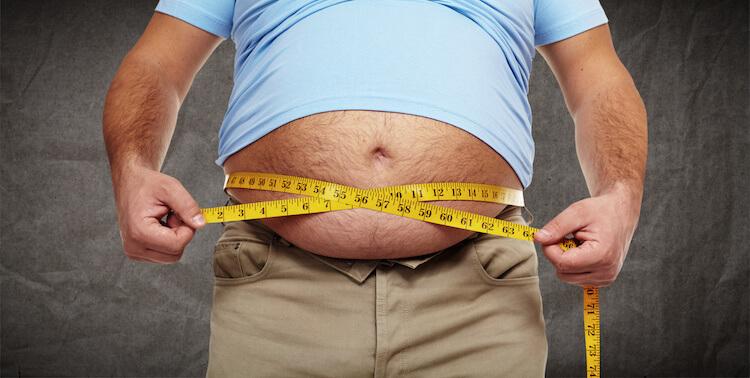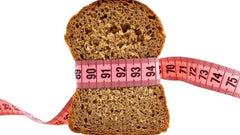
Gastric Balloon For Weight Loss - Cost, Results, and Dangers
As obesity and its associated risks become an ever-looming risk to global healthcare, healthcare systems around the world are revolutionizing weight-loss procedures to help reduce obesity. For anyone looking to lose weight, newer and less invasive procedures can be found on the market which can significantly improve weight loss rates.
Gastric Balloons are one such low-cost solution to weight loss problems. Having gone through the procedure, you can effectively reduce your food intake by at least half of what it would be before the surgery. This procedure has become increasingly safer over the years and is being widely used to help people lose weight globally. This is why a growing number of people are choosing it to overcome their weight problems and achieving peak physical health.
What is a Gastric Balloon and What Is It Used For?
Costs of the Procedure
The Procedure to get A Gastric Balloon
Benefits of the Gastric Balloon Surgery
Possible Side effects and Risks
Gastric Balloon User Reviews
Deaths Related to the Gastric Balloon Procedure
What are Safer Alternatives?

What is a gastric balloon and what is it used for?
The secret to weight-loss is in eating less, without reducing the nutritional value that you consume daily. Ultimately, every piece of food that you eat contains the same substances to keep your body nourished; proteins, carbohydrates and fats. It’s the amounts with which these are found which really make food healthy or unhealthy. So, for example, a salad that has 4 types of fruits and vegetables would have more nutrients than the average cheeseburger.
If you go to a fitness instructor or nutrition specialists, they will never ask you to completely cut out food, but they’ll definitely ask you to shift. In the long run, it becomes essential that you eat enough food to keep yourself active and energetic, without gaining weight. For someone who follows a diet of junk food, they will eat the same amount of food, except will not have the same energy as someone who eats healthier. Similarly, they will also tend to eat more than the person who eats healthier; because unhealthy foods are generally considered much more delicious. So even though these people eat more, they will not have the same amount of energy.
For a lot of people, losing weight comes down to regular exercise and weaning them off of the amount of junk food they’re eating. With this, they’re expected to shift their eating habits so that the less food doesn’t really affect how active they are throughout the day. To help this process, a gastric balloon is inserted into their bodies, to make them feel like they’re full. Since the balloon is placed inside the stomach, you will eat less because there is no space in you for more food.
As you begin to reduce the amount of food you’re eating throughout the day and you shift to alternatives; your diet becomes a lot easier than it was without the balloon.
Costs of the procedure
A gastric balloon is one of the cheapest weight loss solutions in the market. The surgery isn’t covered by insurance, so if you don’t have any, this is probably the option for you. Typically, a gastric balloon costs roughly around $8,000, depending on who you go to for the surgery.

The procedure to get a gastric balloon
As with most medical procedures, there is an assessment period where your healthcare service provider will conduct a thorough examination to determine your eligibility for the surgery. There are numerous risks associated with gastric balloon surgery and to mitigate these, you will have to go through certain pre- and post-operative assessments.
A gastric balloon is usually used to help people with a Body Mass Index between 30-40 BMI. This is also the medically approved standards that qualify anyone as obese. As such, the gastric balloon surgery is increasingly being used to help the obese overcome their weight problems.
Pre-operative procedures
Before your surgeon or doctor conducts the procedure, they will conduct a comprehensive medical, family and psychological assessment. According to governing authorities, the standard procedure contains the following tests:
- A thorough blood panel to make sure that you have the appropriate red blood cell count, and blood sugar levels. If any of these are abnormally high or low, surgery is postponed till the underlying condition is treated.
- Whether you have a disorder of the thyroid. Any abnormalities in thyroid functioning will need to be addressed before you can get the surgery.
- Check for cholesterol levels that can hinder the effectiveness of the treatment. If you have abnormally high levels of cholesterol, then you will first be treated for the cholesterol and then surgery will be conducted.
- Pregnancy tests to ensure that the patients are not pregnant.
- Whether you’re undergoing Oestrogen therapy, they will discontinue it for 3 weeks after which you will be cleared for surgery.
- You will be tested for Sleep Apnoea, Heart Conditions and pre-existing lung conditions that might need to be treated before surgery. In some cases you might be forbidden from surgery if heart complications exist.
- Tobacco use will be discontinued for 6 weeks before the surgery
- Liver Function tests
- Testing for previous substance abuse, history of a family disease, psychiatric illness and elimination of alcohol consumption.
- Cancer Screening.
- Nutritional Evaluation.
- Tests for latex allergies.
- Check-ups for any anti-clotting medication you might be taking.
Based on these tests, your doctors will conduct an evaluation of whether you ought to immediately undergo the gastric balloon surgery. If your doctors find any abnormalities, then you will have to undergo treatment to fix the anomaly before you can be cleared for surgery.
At this point, you will also be examined by a diet specialist who will advise you on your diet after the procedure. It is essential that you follow their set guidelines to avoid any complications from your surgery.
The surgical procedure
For the surgery to be successful, you need to have an absolutely empty stomach. For this reason, you should not eat anything at least 6 hours and have nothing to drink for at least 4 hours before the surgery.
The surgical procedure itself involves a check-up before the surgery, on the day of the surgery itself. Your doctors will check your blood glucose levels, blood pressure levels, temperature, etc. After this, you will be subjected to a gastroscopy; where your doctors will examine your intestines and the throat.
This involves the use of a tube, with a camera attached at the end (also called an endoscope). The tube is very thin and will be inserted through your mouth, down your throat, and into your stomach. The tube is very thin and will not in any way obstruct your breathing. This procedure is conducted to make sure that there is no inflammation or ulcers in your stomach. If there are any, you will be treated for this first.
If all is clear in the gastroscopy, your doctor will remove the tube and reinsert it with a balloon attached at the end. Once the tube reaches your stomach, your doctors will inflate the balloon to occupy exactly half the amount of space in your stomach. They will fill the balloon with saline until the balloon is big enough for your treatment to begin.
Post-surgical care
Since the surgery doesn’t require anyone to stay in the hospital afterward, you will be sent home and required to follow some post-operative precautions. The most important of these is to follow the diet plan that your doctor drew up for you before your surgery. After a sufficient amount of time has passed, your doctors will call you in for follow-ups.
In particular, these are the steps you should follow:
- For the first three days, you should only consume liquids which include Skimmed milk, yogurt, dilute fruit juice.
- For the next six days, you should eat soft foods like blended fruits, lean meat, mashed potatoes, and rice, etc.
- After 10 days you can continue eating normally.
All this while, you shall be required to regularly check in with your doctors who will conduct follow-up tests to ensure that you have become accustomed to your gastric balloon. The tests that they will conduct include:
- Vitamin Deficiency Checks
- Nutritional Supervision
- Cholesterol level tests
- Antihypertensive treatments (To monitor and control blood pressure)
- Bone Density checks
Although this isn’t an exhaustive list of follow-up tests, at this stage your doctors will monitor if your health and wellness is following an acceptable path.
Benefits of the gastric balloon surgery
Before the gastric balloon was approved and for a very long time after, a lot of research was dedicated to studying how effective the procedure actually was. Numerous studies have found that a gastric balloon results are some of the most impressive in terms of losing weight. According to these same studies, patients lost an average of 17.8kgs during the time that they lived with the balloon.
With the supplementary health and wellness regimens that the patients followed, the results of gastric balloon surgeries have proven these to be a long term solution to obesity. Many patients continued to lose weight once they had the balloon removed since they continued with their diet and exercise routines after removal.

Possible side effects and risks
Even though the surgery is not as invasive as older methods like liposuction, the gastric balloon is still a foreign body inside your stomach. For this reason, there are certain risks associated with the treatment; which can possible debilitate into life-threatening complications. Some common gastric balloon side-effects include:
- Gastric Perforation
- Oesophageal Perforation
- Bowel Obstruction
- Overinflation of the balloon
- Pancreatitis
- Stomach pain
- Nausea
- Ulcers
Again, this is not an exhaustive list of gastric balloon side-effects. You should consult your physician to tell you of all the possible risks and side effects if you choose to undergo the procedure.
Gastric balloon user reviews
We actually went ahead and conducted a survey to assess patient reactions after having undergone a gastric balloon surgery. We’ve listed down a few reviews for gastric balloons from the patients below:
- “Getting used to a gastric balloon can take a while, honestly it was much harder than I thought. It’s still a struggle sometimes, but I’m glad that I got one because the results are amazing.”- Bethany Morrison
- “The cost of a gastric balloon is downright brilliant, it’s a really affordable procedure and it’s a really effective weight loss method.” Marlon Sanders
- “I lived with a gastric balloon for a couple of years, the diet changes and the workouts take a while to get used to, but once you do, you’ll see that it’s a great decision to get one.”- Damon Parker
- “The gastric balloon was literally the only option left for me considering my blood sugar levels. I was literally on the edge of going into full blown diabetes. This intervention was probably the healthiest life choice I made.” –Jonathan McMillan
- “I had a minor complication with the gastric balloon, apparently the thing got a little torn inside me. It was scary for a while, but honestly the removal procedure was simple enough and there was no long term damage. I had a new one inserted to continue losing my weight.”- Annie Masters
Deaths related to the gastric balloon procedure
The FDA in the United States recently confirmed reports of 12 fatalities that occurred due to complications from the procedure. Despite these fatalities, they haven’t changed any part of the procedure.
What are safer alternatives?
Although a gastric balloon is one of the best ways to lose weight, there are alternatives to the procedure, both surgical and non-surgical, in case you don’t qualify for the procedure. These include:
Endoscopic sleeve gastroplasty
ESG is a surgical procedure, where a surgeon sutures your stomach to reduce your appetite and help you lose weight. This procedure is completely non-invasive.
Laparoscopic sleeve surgery
A Laparoscopic Sleeve surgery also restricts the amount of food you can eat, by making your stomach full. It involves surgically placing a pouch in your stomach to store food in, which can make you feel full.
Pharmaceutical, psychological, and dietary treatments
If none of these aforementioned treatments is a viable option, there’s always the conventional method of controlling your eating habits and taking medication to help you lose weight. Your doctors can have you undergo psychotherapy, with medication to help you overcome your obesity.
PhenQ manufactures natural weight-loss supplements to help treat obesity. In addition to our natural solutions, our blogs include health and wellness plans to help our readers live a long and healthy life. Get in touch with us today for more information on our products or read our blogs to learn how you can live a wholesome life.




